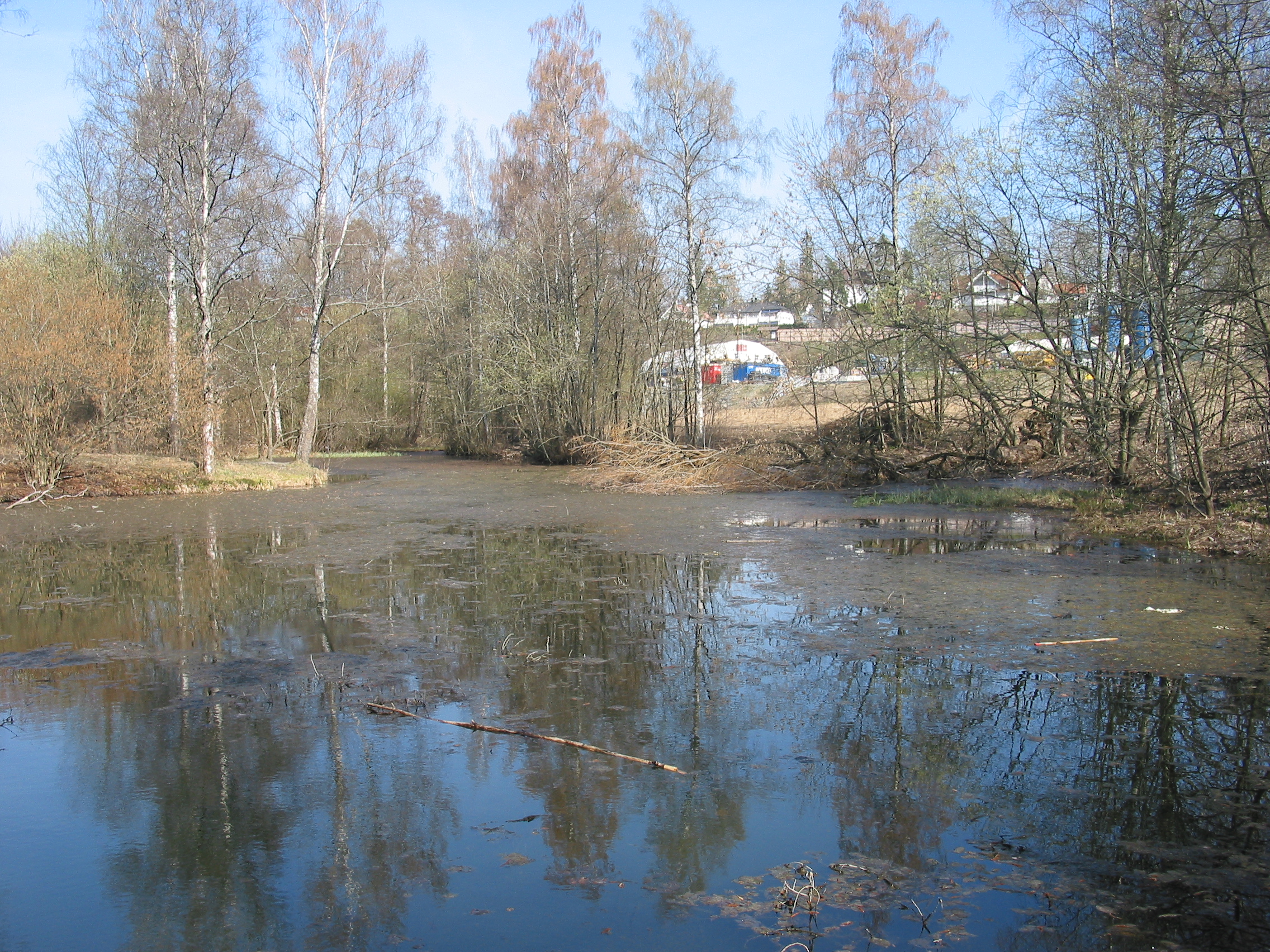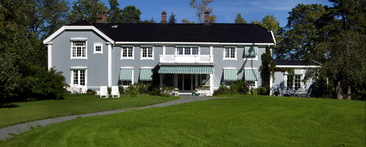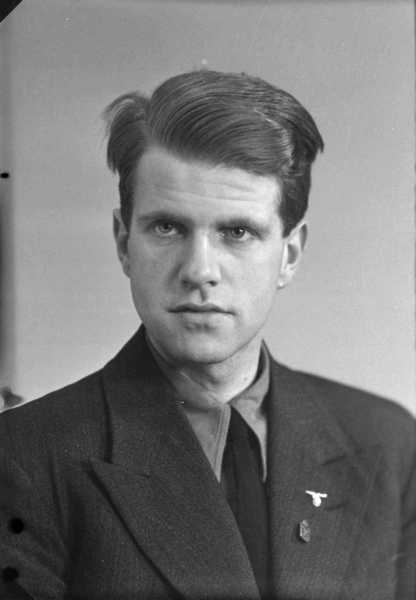|
Skallum
Skallum is an area at Stabekk in Bærum, Norway. It was named after the historic estate Skallum (''Skallum Gård''). It is known locally for its art gallery and as a recreational area, and nationally as the site of an event in the closing days of World War II in Europe. Geography The area is located north of the commercial centre at Stabekk, but slightly south of Stabekk Primary School and the former college at Ringstabekk. Skallum distinguished from the surrounding area as it forms a small valley, a creek having run here in the past. The creek was a part of the Stabekk Watershed, which originated north of Øvrevoll Galloppbane and ran southwards via Voll, Jar, Jarmyra, Tjernsrud and Ringstabekk. The creek dropped into the valley as a waterfall right after crossing what today is the road ''Gamle Ringeriksvei''. The part of the creek that flowed into the Skallum area was named Skallumbekken. After Skallum it continued (under the name Stabekk) to the southeast, across Stabekk farm and ... [...More Info...] [...Related Items...] OR: [Wikipedia] [Google] [Baidu] |
Skallum I Bærum
Skallum is an area at Stabekk in Bærum, Norway. It was named after the historic estate Skallum (''Skallum Gård''). It is known locally for its art gallery and as a recreational area, and nationally as the site of an event in the closing days of World War II in Europe. Geography The area is located north of the commercial centre at Stabekk, but slightly south of Stabekk Primary School and the former college at Ringstabekk. Skallum distinguished from the surrounding area as it forms a small valley, a creek having run here in the past. The creek was a part of the Stabekk Watershed, which originated north of Øvrevoll Galloppbane and ran southwards via Voll, Jar, Jarmyra, Tjernsrud and Ringstabekk. The creek dropped into the valley as a waterfall right after crossing what today is the road ''Gamle Ringeriksvei''. The part of the creek that flowed into the Skallum area was named Skallumbekken. After Skallum it continued (under the name Stabekk) to the southeast, across Stabekk farm and ... [...More Info...] [...Related Items...] OR: [Wikipedia] [Google] [Baidu] |
Egil Olbjørn
Egil Yngvar Olbjørn (3 August 1902 – 1 February 1982) was a Norwegian police leader. He came to prominence during the occupation of Norway by Nazi Germany, as a member of Nasjonal Samling and supporter of Jonas Lie. He headed the police branch Ordenspolitiet. To a certain degree he tried to resist German control, and was imprisoned for a short period in the autumn of 1944. He was saved from prison by Jonas Lie, and Olbjørn stood by Lie's side when they entrenched themselves at Skallum on 8 May 1945 after the Nazi capitulation; however Olbjørn gave up, and left Skallum some days before Lie (who died there on 11 May). Olbjørn is also known as a judge (together with Karl Marthinsen and Egil Reichborn-Kjennerud) in the special court that sentenced Gunnar Eilifsen to death in 1943. During the legal purge in Norway after World War II The purge in Norway after World War II was a purge that took place between May 1945 and August 1948 against anyone who was deemed to have collab ... [...More Info...] [...Related Items...] OR: [Wikipedia] [Google] [Baidu] |
Henrik Rogstad
Henrik Rogstad (13 April 1916, in Trondheim – 10 May 1945) was a politician for the Norwegian fascist party ''Nasjonal Samling''. During the Second World War he was a ''fylkesfører'' (''Gauleiter'') in the county of Sør-Trøndelag. Rogstad was a member of the ''Nasjonal Samling Ungdomsfylking'' fascist youth organisation and became active within the party in 1940. At the initiative of Rolf Jørgen Fuglesang Rogstad was appointed ''fylkesfører'' for Sør-Trøndelag. He was a pan-Germanist and helped the German occupation of Norway, German occupational forces to make up lists of people that could be taken hostages during the martial law in Trondheim in 1942. Rogstad was appointed leader of the paramilitary organisation ''Hirden'' after its original leader Karl Marthinsen was assassinated in February 1945. In April of the same year he was also appointed chief of the police unit ''Statspolitiet''. In May 1945, Rogstad along with Jonas Lie (government minister), Jonas Lie and Sver ... [...More Info...] [...Related Items...] OR: [Wikipedia] [Google] [Baidu] |
Jonas Lie (government Minister)
Jonas Lie (31 December 1899 – 11 May 1945) was a Norwegian councilor of state in the Nasjonal Samling government of Vidkun Quisling in 1940, then acting councilor of state 1940–1941, and Minister of Police between 1941 and 1945 in the new Quisling government. Lie was the grandson of the novelist Jonas Lie and the son of the writer Erik Lie. Early life Raised in a family with close ties to Germany, Lie was a war correspondent on the Western front and Eastern front during World War I. He was a successful police officer in the 1930s. He was the police officer charged with accompanying Leon Trotsky on a freighter from Norway to Mexico. His political convictions may have been influenced by his uncle Nils Kjær, who was an ardent antisemite. Fascism It is possible that Lie was introduced to Heinrich Himmler as early as 1935. They maintained a close personal relationship during the entire Nazi era. Lie became a rival of Vidkun Quisling's during the occupation of Norway. Despite ... [...More Info...] [...Related Items...] OR: [Wikipedia] [Google] [Baidu] |
Stabekk
Stabekk is a suburban centre in the municipality of Bærum, Norway, west of Oslo. It is predominantly a residential area, with many residents commuting to Oslo. As of 2005 the population was 6,261. Bærum has the highest income per capita and the highest proportion of university-educated individuals in Norway. It is one of Norway's priciest and most fashionable residential areas, leading residents to be frequently stereotyped as snobs in Norwegian popular culture. The area has some of the most conservative populace in Norway Stabekk has a commercial district, roughly divided into ''Øvre'' (Upper) Stabekk and ''Nedre'' (Lower) Stabekk, separated by a hill. There are a number of retail shops in both these sections as well as a commuter railway station served by Drammenbanen. Stabekk also has a bandy field, a primary school, an upper-secondary school, a cinema, and a tennis club. The campus of the Norwegian Teachers College for Home Economics is on the architectural registr The foot ... [...More Info...] [...Related Items...] OR: [Wikipedia] [Google] [Baidu] |
Hird (Nazi)
''Hirden'' (the ''hird'') was a uniformed paramilitary organisation during the occupation of Norway by Nazi Germany, modelled the same way as the German Sturmabteilungen. Overview Vidkun Quisling's fascist party Nasjonal Samling frequently used words and symbols from the old Norse Viking era. During the Second World War, membership was compulsory for all Nasjonal Samling members. In total, about 8,500 Norwegians were members of ''Hirden'' during the war. The organisation was dissolved after the liberation, and many of its former members were prosecuted and convicted for treason and collaboration. History During the German occupation Hirden got a more military slant. The intention was that it should form the nucleus of a future Norwegian Nazi army, and a " hirdmarine" (Hirden navy) and a " Hirdens flykorps"(Hirden's air force corps) were created in 1942 in addition to the real Hirden, Rikshirden. However, many Hirden members volunteered to Norwegian military units in the war o ... [...More Info...] [...Related Items...] OR: [Wikipedia] [Google] [Baidu] |
Norwegian Resistance Movement
The Norwegian resistance (Norwegian: ''Motstandsbevegelsen'') to the occupation of Norway by Nazi Germany began after Operation Weserübung in 1940 and ended in 1945. It took several forms: *Asserting the legitimacy of the exiled government, and by implication the lack of legitimacy of Vidkun Quisling's pro-Nazi regime and Josef Terboven's military administration *The initial defence in Southern Norway, which was largely disorganised, but succeeded in allowing the government to escape capture *The more organised military defence and counter-attacks in parts of Western and Northern Norway, aimed at securing strategic positions and the evacuation of the government *Armed resistance, in the form of sabotage, commando raids, assassinations and other special operations during the occupation *Civil disobedience and unarmed resistance Asserting legitimacy of exiled Norwegian government The Norwegian government of Prime Minister Johan Nygaardsvold, with the exception of foreign mini ... [...More Info...] [...Related Items...] OR: [Wikipedia] [Google] [Baidu] |
Nils Johan Ringdal
Nils Johan Ringdal (6 March 1952 – 11 September 2008) was a Norwegian author and historian, known mostly for his works on Norwegian occupation history and Norwegian cultural history, and for his controversial book "''Nationaltheaterets Historie 1899-1999''" ''(The History of the National Theater 1899-1999)''. Ringdal had been living in various countries in Southeast Asia since 1988, along with his domestic partner Georg Petersen. Ringdal was found dead on 11 September 2008 in Denpasar, Indonesia Indonesia, officially the Republic of Indonesia, is a country in Southeast Asia and Oceania between the Indian and Pacific oceans. It consists of over 17,000 islands, including Sumatra, Java, Sulawesi, and parts of Borneo and New Guine .... References Dagbladet(in Norwegian)Aftenposten(in Norwegian)Verdens Gang(in Norwegian) 1952 births 2008 deaths Gay writers 20th-century Norwegian historians Norwegian LGBT writers LGBT historians 21st-century Norwegian his ... [...More Info...] [...Related Items...] OR: [Wikipedia] [Google] [Baidu] |
Erling Søvik
Erling is a Scandinavian male name, meaning "Heir of clanchief", i.e. prince or similar. Notable people named Erling include: Given name *Erling Aas-Eng (born 1965), Norwegian politician * Erling Aastad (1898–1963), Norwegian long jumper and sprinter *Erling Aksdal (born 1953), Norwegian jazz pianist and composer * Erling Andersen (1905–1993), American cross-country skier * Erling Andersen (born 1960), Norwegian race walker *Erling Anger (1909–1999), Norwegian civil servant * Erling Bauck (1924–2004), Norwegian World War II resistance member and writer *Erling Blöndal Bengtsson (1932–2013), Danish cellist *Erling Brøndum (1930–2017), Danish journalist and politician *Erling Christophersen (1898–1994), Norwegian botanist, geographer and diplomat *Erling Dorf (1905–1984), American geologist *Erling Drangsholt (1885–1950), Norwegian actor *Erling Eidem (1880–1972), Swedish theologian who served as archbishop of Uppsala 1931–1950 *Erling Folkvord (born 1949), Nor ... [...More Info...] [...Related Items...] OR: [Wikipedia] [Google] [Baidu] |
Schutzstaffel
The ''Schutzstaffel'' (SS; also stylized as ''ᛋᛋ'' with Armanen runes; ; "Protection Squadron") was a major paramilitary organization under Adolf Hitler and the Nazi Party in Nazi Germany, and later throughout German-occupied Europe during World War II. It began with a small guard unit known as the ''Saal-Schutz'' ("Hall Security") made up of party volunteers to provide security for party meetings in Munich. In 1925, Heinrich Himmler joined the unit, which had by then been reformed and given its final name. Under his direction (1929–1945) it grew from a small paramilitary formation during the Weimar Republic to one of the most powerful organizations in Nazi Germany. From the time of the Nazi Party's rise to power until the regime's collapse in 1945, the SS was the foremost agency of security, surveillance, and terror within Germany and German-occupied Europe. The two main constituent groups were the '' Allgemeine SS'' (General SS) and ''Waffen-SS'' (Armed SS). The ' ... [...More Info...] [...Related Items...] OR: [Wikipedia] [Google] [Baidu] |
Sverre Riisnæs
Sverre Parelius Riisnæs (6 November 1897 - 21 June 1988) was a Norwegian jurist and public prosecutor. He was a member of the collaborationist government ''Nasjonal Samling'' in occupied Norway during World War II and a ''Standartenführer'' (Colonel) in the Schutzstaffel. Pre-war career Riisnæs was an important public prosecutor in inter-war Norway, and had contacts in the international policing community. He is credited with introducing new investigative techniques, such as the use of police dogs, to Norway. Riisnæs was the public prosecutor in the famous case against Per Imerslund and other Norwegian Nazis who had broken into the home where Leon Trotsky had been staying before his deportation from Norway to Mexico. He was a supporter of Adolf Hitler, but broke all contact with his German friends when he was appointed by Parliament in January 1940 to investigate German espionage in Norway. Wartime collaborationist minister He was appointed councillor of state in the Nasjon ... [...More Info...] [...Related Items...] OR: [Wikipedia] [Google] [Baidu] |
Bygdøy
Bygdøy or Bygdø is a peninsula situated on the western side of Oslo, Norway. Administratively, Bygdøy belongs to the borough of Frogner; historically Bygdøy was part of Aker Municipality and became part of Oslo in 1948. Bygdøy is a popular recreation area and is among the most fashionable residential areas in Norway, where the most expensive properties in the entire country are found. Bygdøy is also the home of five national museums as well as a royal estate. Wealthy families of Christiania acquired country houses in Bygdøy during the 18th and 19th centuries; by the 19th century Bygdøy had become a favourite of the wealthy in the capital region and was exclusively settled by the wealthy and their servants. Tourism Bygdøy has parks and forests, and beaches including the Huk ordinary and nudist beach. In 1885 there were only 111 houses at Bygdøy; today most of the huge gardens are split into smaller patches of land, making Bygdøy largely a residential zone but reta ... [...More Info...] [...Related Items...] OR: [Wikipedia] [Google] [Baidu] |



.jpg)



